

FG reveals survey
Delivering a speech to mark 130 years of the National Trust, Defra Secretary of State Steve Reed gave the clearest indication yet of the Government’s vision for UK farming.
He said: “We are working with farmers to move towards regenerative farming that focuses on improving the soil so it needs less artificial fertiliser, fewer pesticides, and has more organic matter that helps retain water.”
Mr Reed said a more regenerative approach was not just good for nature and for water quality, but it was also good for farm businesses, lowering input costs while at the same time increasing production of sustainable, good quality food.
And the Minister is not alone in his thinking. Major food companies and retailers too have begun promoting their sustainable farming practices in an attempt to win over the more eco-conscious consumer.
Common sense
But to the growing number of farmers who follow the key principles – working with minimum soil disturbance, increasing organic matter, building biodiversity, creating living roots, integrating livestock – it is a commonsense approach to farming that balances environmental gains with productivity and profitability.
In order to discover more, Farmers Guardian carried out two studies, one with farmers and one with consumers, to try to ascertain just
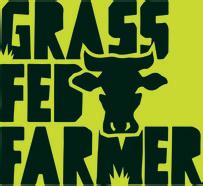


Regenerative Farming
what people know, and do not know, about regen farming.
More than 2,000 people answered the call, with the overwhelming takeaway being that both members of the industry and the general public were keen to grow their understanding and embark on a more regenerative path to both production and consumption.
Almost 85% of farmers could identify six main principles of regen farming, with 54% of those saying improving soil and organic matter was the main tenet of regen. However, only 46% saw integrating livestock as part of farming regeneratively.
When it came to what was being implemented, 64% were promoting and improving biodiversity, while 66% were focusing on building soil organic matter and carbon sequestration. Some 61% were looking for a reduction in fertiliser, the cost of which has been a source of concern for the sector following the war in Ukraine.
Speaking to those farmers who have already transitioned to regenerative practices, responses were universally positive.
Farmland birds
Answers ranged from a rise in farmland birds and insects, and a 50% increase in crop production, while one farmer was able to say that after five years, he had increased his organic matter from 2% to 6%.
Martin Lines, chief executive of the Nature Friendly Farming Network, said: “This survey clearly shows that understanding of regenerative agriculture and nature-friendly farming is growing strongly among both farmers and consumers – which is very encouraging.
“Importantly, it also highlights there is a real market demand for produce grown with high environmental standards, so retailers should definitely take notice.
“Now, we need quick action to secure fair deals from supermarkets and supportive policies to scale up naturefriendly farming. Climate extremes like the current drought show just how urgent this is.”
Phil Stocker, chief executive of the National Sheep Association, said it believed regen had ‘hit the mark’ with farmers and the public.
Royal Countryside Fund supports regen movement
THE Royal Countryside Fund is aiming to support farmers by looking at new focuses such as soil health and regenerative practices.
Its programmes, Routes to Regen and Regenified, have armed farmers with key advice and workshops, and access to knowledge.
Routes to Regen gave farmers tailored advice, plus access to a curated menu of resources and opportunities.
The charity has also partnered with Regenified, a certification body to drive the regenerative agriculture movement, allowing the charity to run bespoke workshops
across Herefordshire to help famers adopt different practices.
Keith Halstead, executive director of The Royal Countryside Fund, said soil was a farmer’s biggest asset and ‘looking what is going on beneath’ can future-proof the farm, as well as potentially reduce costs such as fertiliser.
Mr Halstead said: “Strong soil structure can also help protect the farm against extreme weather. In drought years, your crop should stay green for longer and during wet years healthy soil will drain far better, reducing the impact of flooding.”
He added there were benefits for
Profitability and marketability
ALMOST 43% of farmers said they believed consumers would not pay more for regeneratively-produced food. However, of those that do farm regeneratively, one of the key positives was the opening up of new markets, with farmers given the opportunity to sell directly to suppliers such as butchers.
Social media and telling the story of the farm also played a large part as respondents felt the public was keen to see how food was produced.
In terms of barriers to adoption, farmers said it was hard to embark on new ways, with most fearing a drop in production or income.
Christopher Price, chief executive at Rare Breeds Survival Trust, said regen farming was becoming increasingly popular, especially with those who opt for a career in farming after gaining experience in another sector.
“Increasingly, we are seeing new entrants, generally people who have done something before, they know how to read a balance sheet, know about profit and loss, who start off looking at the numbers,” he said.
“One of its strengths in my opinion is the absence of prescriptive definitions. It is more of a mindset change and a general approach to farming
“They choose regenerative farming, recognising the benefits of reduced input costs and marketing and creating their own brand.”
Mr Price added if they are interested in livestock, native breeds fit into this mentality with choosing a breed ‘bred to work in a particular landscape’ as a way to keep costs down.
“Native breeds fit into that ethos and the economics. On the income side, if you can create a brand around the place, people and low input, high welfare system. The challenge is you have to have different skills from pure farming.”
He highlighted a lot of aspects of regenerative farming embraced traditional techniques, which were again popular with those new to the industry and people who are interested in where their food comes from.
Neil Shand, chief executive of the National Beef Association (NBA), agreed with this sentiment and highlighted the role mixed farming plays in regen systems.
“It is how we used to farm years ago, and in many cases it centres on mixed farming where we are bringing livestock back into arable rotations.”
He added many of NBA’s own
systems that puts things back rather than exploiting some aspects.
“Increasingly, I can foresee that regenerative farming approaches will
the environment, but good soil health and environmental gains should go ‘hand-in-hand’ with productive agriculture.
“Farming can feel very isolating at times, but no-one has to go it alone and we have found that peerto-peer learning is one of the most effective ways to spread information and ideas about soil health,” he said. He added there were also ‘amazing and knowledgeable’ farm support groups providing tailored local help.



membership base were doing just this, and were working with arable farmers by exchanging farmyard manure for straw.
He said: “We are seeing this a lot in the eastern counties, where arable farmers are recognising the value of increasing organic matter within their soils. We must remember that what goes into the soil will help guarantee harvests in the years to come.”
However, he added that greater support was needed in order for farmers to embrace regen methods. He said: “A lack of support from the Government will only drive producers into more production-based schemes, because at the end of the day they need to make money.”
hit the mark with consumers and policy-makers, as well as make sense economically for farmers,” Mr Stocker added.
Survey shows work still to be done on consumer recognition
MORE than half of people recognise regenerative agriculture is better for the environment and sustainability, but there is still more work to be done for consumer buy-in.
A Farmers Guardian survey of 2,126 UK adults, carried out by Savanta, showed 56% of people agreed about the benefits of regenerative agriculture on the environment and sustainability, with the same percentage saying the methods improve the health and quality
of our soils. However, 37% had not heard of regenerative agriculture before.
Andy Cato, Wildfarmed co-founder, said if those who said they neither agree nor disagree were included, it took the total to roughly two-thirds, ‘which is unsurprising, but shows what needs to be done’.
He highlighted 38% had said they neither agree or disagree about actively seeking out regenerative products.
He said: “I wonder if this is because people do not know how to. A lack of traceable supply chains and a profusion of sustainable and ethical claims make this so hard for high street shoppers.”
But he added that 37% were prepared to pay more for regen, which was ‘encouraging and much higher than previous figures I have seen’.
Mark Hodge, vice-president of marketing at McCain Foods GB, said the survey results showed there is strong
demand for more sustainably-sourced food, and there had been a ‘steady shift’ towards sustainable living.
He added: “While general awareness of regenerative agriculture remains relatively low, our recent research has shown that more than half of Brits have expressed interest in learning more about regenerative agriculture practices – an encouraging sign of appetite from the public to understand where their food comes from.”
Neil Shand
From Carbon to Skylarks: Co-op Dairy Farmers Track Real-World Impact
Soil Association Exchange is working with Co-op dairy farms to collect holistic environmental baselines, support sustainable farming improvements and celebrate what’s already working
It started with a small pilot: ten dairy farms opening their gates — and their data — to explore what sustainability really means on the ground. One year later, this collaboration between Co-op and Soil Association Exchange has grown rapidly. Now, more than 90% of Coop’s dairy group, who supply milk from across the UK are engaged in a comprehensive programme designed to understand and support the environmental sustainability of the dairy supply chain.
Dairy accounts for 11% of Co-op’s Scope 3 emissions — those indirect emissions across the value chain. While Co-op has been gathering carbon data with their farmers for some time, they recognised the need for a broader holistic approach. Together with Soil Association Exchange, they’re building a sustainability dataset that supports farmers on a wider regenerative journey — measuring not just carbon but soil health, biodiversity, water, and social factors.
“Much of the work that our farmers do every day to support nature and biodiversity goes unrecognised” says Dr Lucy Witter, Co-op Agriculture Manager for Dairy.
“By partnering with Soil Association Exchange, we’re helping our farmers record this work, access meaningful data and advice to support practical improvements as well as recognise the fantastic work already underway on farms.”
Soil Association Exchange works directly with farmers. Each receives a full sustainability baseline, followed by tailored advice delivered through group workshops — designed to balance environmental improvements with farm profitability and long-term resilience. The aim is to create a rounded, measurable picture of sustainability that farmers can track year after year.
Co-op Dairy farmer Andy Venables, farms with his family in Cheshire, and is participating in the Soil Association Exchange Programme this year. “Protecting the health of our soils is already an important part of our farm management practices. Working with the Soil Association Exchange advisors has been insightful and has enabled us to take things to the next level and make better use of the data we have available”, says Andy.
The voluntary programme has been enthusiastically embraced.
“Over 90% of Co-op dairy farmers have signed up,” says Joseph Gridley, Soil Association Exchange CEO “They see the benefit not just for Co-op’s reporting, but for their own businesses. This is data that helps farms thrive.”
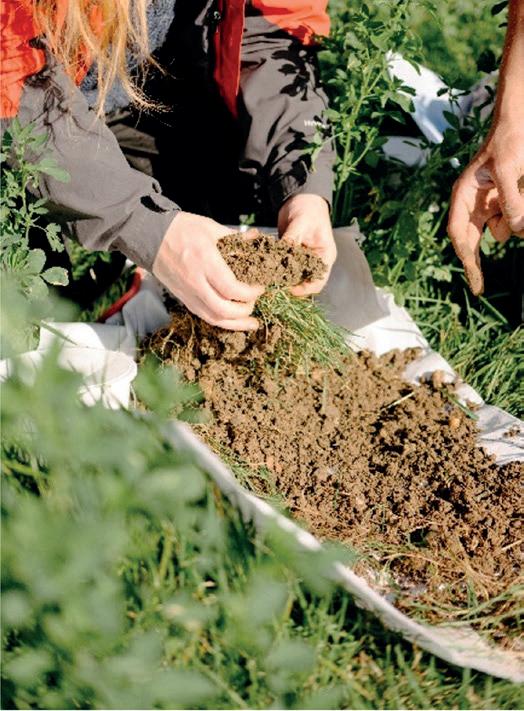
More Than a Baseline
The initial pilot farms demonstrated the power of this joined-up approach. For example, water quality hotspots were identified early, leading to practical intervention plans. Soil carbon sequestration potential sparked new conversations about soil health and productivity.
Data from the recent larger rollout is now coming in. For instance
initial data on bird species diversity tells an important story. Across the 109 farms involved so far, 26 red list bird species have been recorded — including one farm with rare turtle doves, ten farms with linnets, ten with yellowhammers, and 44 supporting skylarks. It’s clear these farms are already vital refuges for biodiversity.
Benchmarking has become a key tool in the process. “Co-op dairy farmers can now evidence the positive role they play in managing nature and biodiversity on their farms and see how they compare to over 1300 other farms Soil Association Exchange has already baselined nationally,” says Dr Lucy Witter, Co-op Agriculture Manager for Dairy. “It’s helping highlight areas of excellence and where there’s room for improvement.”
Pam Black farms with her son on their dairy farm in Thornhill, Stirling. “Through the Soil Association Exchange platform, we have recorded important bird species including curlew, lapwing and linnet on our farm. I’m proud to showcase the work that we are doing, alongside our dairy business, to manage the habitats that these increasingly rare species depend upon”, says Pam.
While carbon emissions remain a focus, the programme’s wider lens is critical. “This isn’t just about carbon,” says Beth Metson, Head of Farming Advice at Soil Association Exchange “Farmers are engaging with data on nature, soil health, water, animal welfare, and social factors — and using it to guide practical decisions.”
Looking Ahead
Beth highlights how the partnership is already making an impact. “What’s exciting about this work is how quickly farmers can get insights that matter. Insights that

help them make practical changes — from better understanding of carbon and nature data to more confident decision-making on the farm. It’s not just about compliance or reporting; it’s about helping farmers find opportunities that support both their business and the environment.”
“We’re committed to helping our farmers on their journey to climate resilience by supporting farmer-led solutions through our partnership with the Soil Association Exchange” says Joseph Keating Senior Farming & Fisheries Manager.
With over 90% of Co-op dairy pool engaged in 2025, this collaboration is creating one of the most comprehensive on-farm sustainability datasets in the UK dairy sector — enabling better decisions, stronger assurance for retailers, and clearer pathways to net zero.
Importantly, this work also celebrates what’s already working well. “Farming is full of nature-friendly, climate-smart innovation,” says Dr Lucy Witter, Co-op Agriculture Manager for Dairy. “Our partnership with Soil Association Exchange helps ensure those efforts get the recognition and support they deserve.”

Regenerative Farming
With consumers already buying into the concept of regen, Alex Black takes a look at how the potato sector is adapting – with one big company leading the way.
UK potato giant aims to help growers transition to regen
Growers are embracing regenerative agriculture in the potato sector, with farmers focusing on their impact on the land.
And the industry was receptive to making changes, according to Scott Walker, GB Potatoes chief executive.
“Regen farming is not doing the same thing on every piece of land,” he said, adding it was dependent on soil type and location as well as other factors.
He highlighted the work being done by some of the big companies in the sector, to show farmers the options and opportunities to transition to regen.
The UK’s largest purchaser of potatoes, McCain, said there was a ‘clear appetite’ from the public who wanted to understand where food comes from, with its research into consumer attitudes towards regenerative agriculture showing more than half were interested in learning more about farming and regenerative practices.
Relatable
James Young, McCain’s vice-president of agriculture, said: “The opportunity therefore lies in making this information more accessible and engaging.”
McCain launched its ‘Taste Good. Feed Good.’ marketing campaign earlier this year.
“Our goal was to introduce regenerative agriculture to everyday consumers in a way that feels relevant, relatable and easy to understand. Central to the campaign is our Farms of the Future initiative, a series of innovative, climate-resilient farms around the world where we test new, sustainable potatogrowing methods,” Mr Young said.
An immersive Augmented Reality game was created at London’s Outernet, allowing players to step into a virtual Farm of the Future environment, explore regenerative farming practices and earn prizes and rewards as they played.
“Through this activation, we transformed Tottenham Court Road into an immersive 360-degree farming experience featuring interactive gameplay and a guest appearance by influencer Farmer Will. The activation was a great success,
By the end of 2024, 71% of McCain’s farmers’ potato acreage globally had reached the first level of its regen framework.
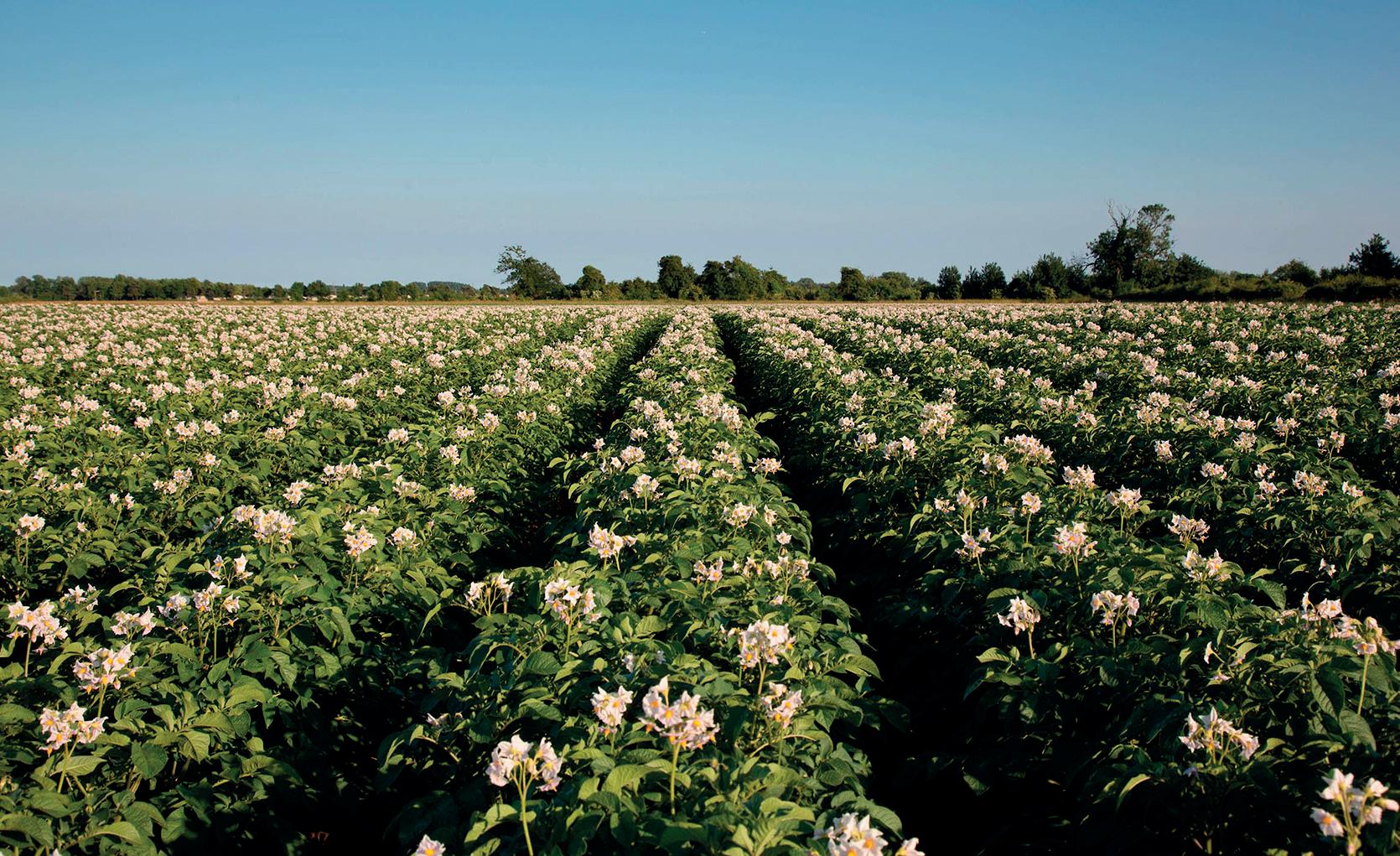
with many visitors sharing that they had learned something new about regenerative agriculture,” he added.
By the end of 2024, 71% of McCain’s farmers’ potato acreage globally had reached the onboarding level of its Regenerative Agriculture Framework, and 24% had progressed to the engaged level or higher.
The onboarding level means growers have participated in train-
ing, completed a soil health assessment to establish a baseline, and met the requirements for at least one engaged indicator of their choice.
Investment
Mr Young added McCain realised transitioning to regenerative practices was not always easy and it often requires significant upfront investment and so the company has provided expert-led training, interactive farmer meetings, field tours and on-farm demonstrations.
“As we began to implement regenerative agriculture practices across our supply chain, we recognised the need for an accessible framework and dedicated research to make our commitments measurable,” Mr Young added.
We created the framework with the purpose of supporting our farmers as they transition to more sustainable, resilient ways of growing potatoes
JAMES YOUNG
“To further support them, we have a variety of financial support mechanisms for each market. In the UK, we launched a pioneering partnership with NatWest in 2023 to help reduce financial barriers to regenerative adoption.
“As the UK’s largest purchaser of potatoes, and a company founded by a family of farmers, we are deeply committed to supporting our 250 British growers, many of whom we have worked with for three generations, in building long-term farm resilience and improving soil health.”
He added McCain was working towards having 100% of its global potato acreage at the onboarding level and at least 50% at the engaged level by 2030.
“We created the McCain Regenerative Agriculture Framework with the purpose of supporting our farmers as they transition to more sustainable, resilient ways of growing potatoes and that is why we developed it with the guidance of growers and agricultural experts.”
He said it was designed to be practical, flexible and tailored to what works for growers, recognising every farm is different, rather than a ‘rigid checklist’.
“At its core, the framework helps farmers move along a regenerative journey,” he added.
“It outlines four levels – onboarding, engaged, advanced and leading – so as farmers adopt more regenerative practices, they can track their progress and celebrate their improvements.”
Mr Young said its focus on seven key indicators which matter most sets the framework apart and it has also created two versions, one each for the northern and southern hemispheres.
PICTURE: TIM SCRIVENER































Boost the benefits and minimise the risks from seed selection to termination with the Cover Crops Guide and Selection Tool. The UK’s first accessible, independent, farmer-led and scientifically supported guide to cover cropping.













The Cover Crops Guide was funded by Innovate UK. Key partners include David Purdy Soils and:
Regenerative Farming
The Ark Summit brought key industry figures together to discuss how to develop the conversation around regenerative and organic farming. Emily Ashworth reports.
Collaborative action vital to a sustainable food future
Encouraging discussion and inspiring change were the key themes at this year’s Ark Summit, a regenerative farming conference held in the heart of the Cotswolds.
About 150 visitors descended on Hill Barn in Hazleton, Cheltenham, to hear from the likes of Helen Browning, chief executive of the Soil Association; Patrick Holden, founder of the Sustainable Food Trust; Sophie Gregory, organic dairy farmer; and Rob Bray, chief sustainability officer at regenerative flour company Wildfarmed, to name but a few.
Tom Pycraft, the founder of the summit’s host Ark Consultancy and Events, said that the industry had reached a ‘critical moment’ for regenerative and sustainable agriculture.
Transform
“In uncertain times, we must move fast – beyond polarised land use debates and technical jargon – to transform our systems,” he said.
“A sustainable food future depends on resilience and collaborative action between the public and private sectors, to build a food system that supports both people and the planet.”
The day began with a panel on
the mass adoption of sustainable agriculture, where George Eustice, former Secretary of State at Defra, said the Sustainable Farming Incentive was quite ‘radical’ at the time, and it was a scheme created to incentivise farmers to do the ‘right thing’.
He also said policies which focus on nature and restoration need time to work, and that for these schemes to reflect what really goes on in the field, farmers who hold key technical knowledge need to be consulted.
It was a sentiment fellow panellist Adele Jones, executive director of the Sustainable Food Trust, agreed with.
She said: “We need farmers’ voices in policy decision-making –blunt, quick decisions are being made that have a big impact on medium and small farmers.”
Language was also a key topic and, it was suggested, perhaps a barrier when trying to encourage farmers to think about alternative farming practices.
Outside, overlooking the landscape around Hill Barn, Claire McKenzie, producer of the docu-film Six Inches of Soil, led a session on empowering young people, inclusion and well-being.
We need farmers’ voices in policy decision-making –blunt, quick decisions are being made that have a big impact on medium and small farmers
ADELE JONES
The connection between nature and health was a topic discussed throughout the day, and Jamie Fielden, founder of well-known charity Jamie’s Farm, which works to support young people, said technology had taken people away from the land, and there was a lack of people outside because of it.
He also said that the physical work of farming can give young people confidence and a sense of achievement.
Mindset
Ethos, leading the way and proactive change were in focus too.
Organic arable farmer Ben Andrews said that switching farming methods can seem risky, but sometimes you simply ‘have to go for it’.
He was part of a panel shining a light on the UK’s farming pioneers, along with arable farmer Ed Horton.
Mr Horton said having the right
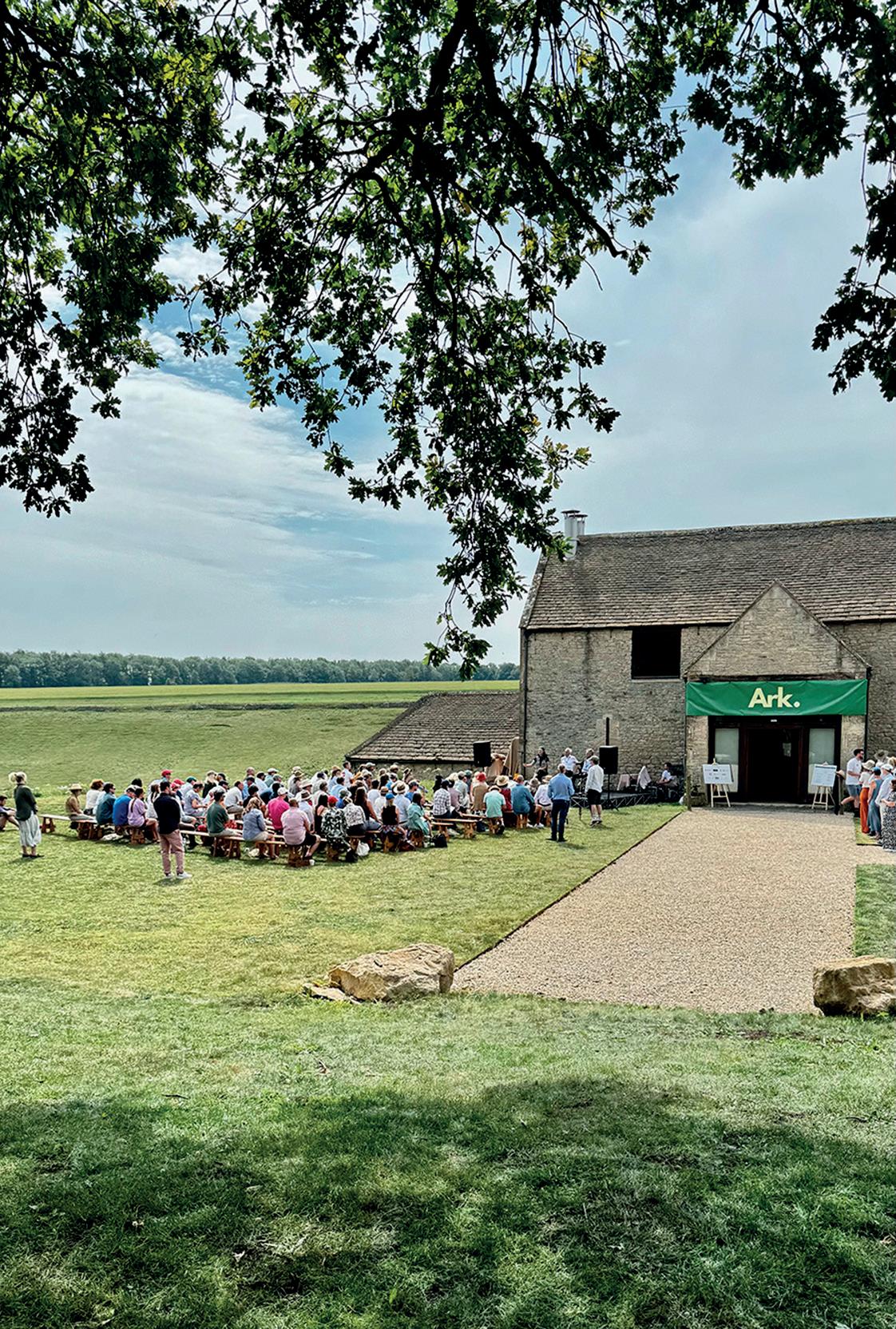
people around you was necessary to progress and implement change.
He said: “I can have all the wild ideas I like, but I rely on a good team who help to run the farm. I am able to take my idea and communicate it to them.”
Mr Horton also said being part of farming cluster groups motivated farmers to share knowledge and could be used as education tools.
Building resilience in the supply chain is something many in the industry are currently fighting for, and Mr Bray said there was space for high-quality produce in supermarkets and that farmers must
‘work within the system in order to drive meaningful change’.
Meaningful
Sending meaningful messages to the consumer can create impact, too.
Mr Bray added: “You can eat this food, enjoy it and know it is not hurting the planet.”
Founder of Wylde Market Nick Jefferson also said that using simple language was key. Bringing produce to life and the benefits of regenerative agriculture – especially with a focus on human health – will encourage people to pay for it.
The summit aimed to shine a light on the benefits of farming regeneratively.










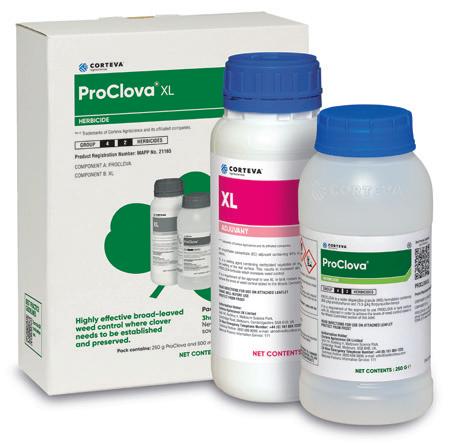
Regenerative Farming
Farmer-owned First Milk has joined forces with buyer Nestle to help its farmers take their first steps into regenerative farming. Jane Thynne finds out more.
First Milk is one of the UK’s foremost farmer-owned dairy cooperatives, producing more than 1.6 billion litres of milk annually, from farms located in the Mull of Kintyre to the valleys of Wales.
A fully certified B-Corp, its 700 farmer members follow a regenerative path in pursuit of the organisation’s aims of making ‘dairy a force for good’.
Since 2003, First Milk has been a major supplier to Nestle’s factories in Cumbria and Ayrshire, sourcing milk from within a 50-mile radius. It is then used in a range of chocolate favourites such as KitKat, Quality Street and Aero, as well as various instant coffee brands.
Nestle and First Milk launched the Regenerative Milk Plan in 2021 to support farmers as they moved to a more regenerative space, focusing on soils and farmland by grazing cows, planting trees, managing hedgerows and encouraging wildlife, as well as protecting waterways, reducing emissions and capturing carbon.
On the road to regen


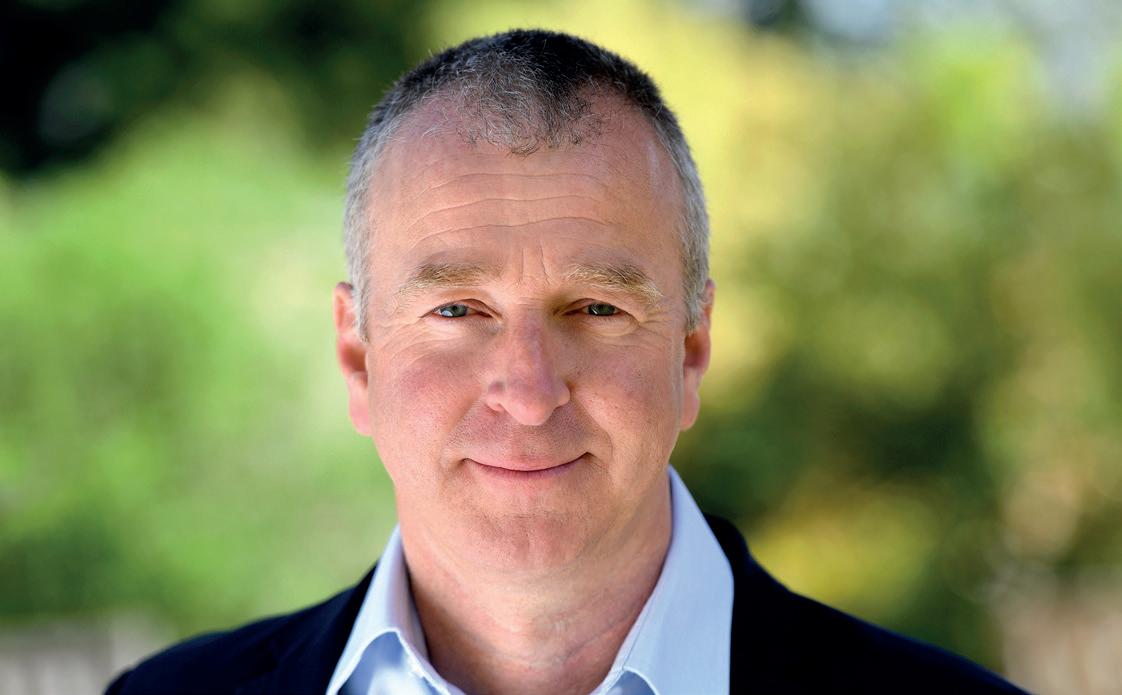


In support of its largest raw milk buyer, First Milk joined with Nestle on this to back a commitment to achieve net zero by 2050 through the adoption of regenerative agricultural principles.
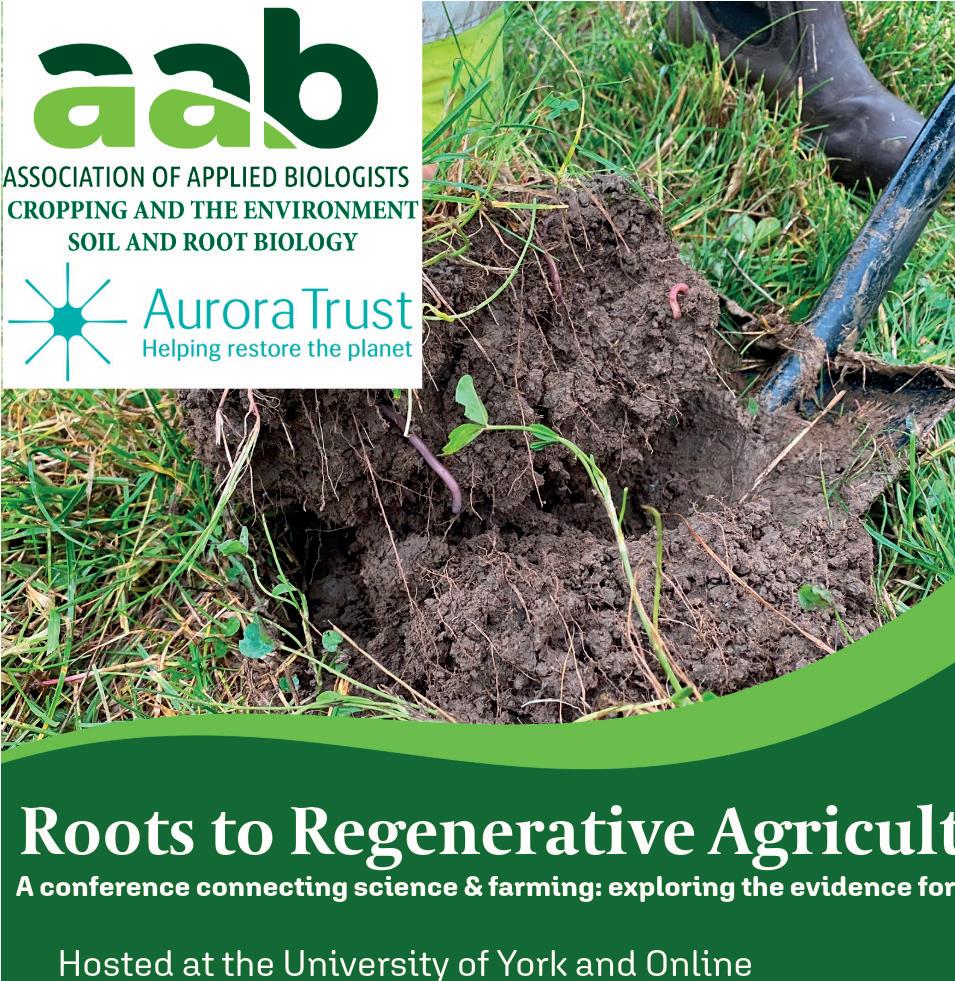
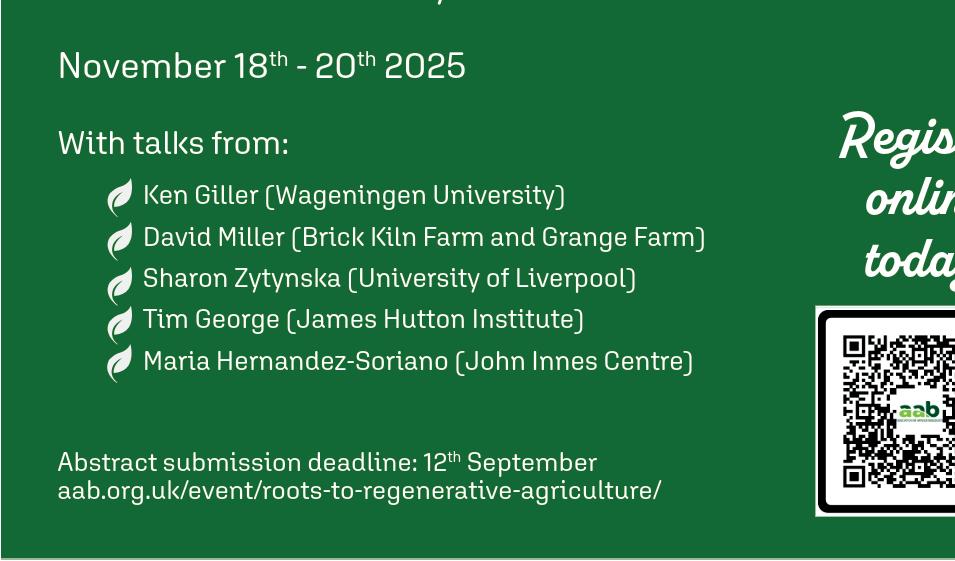
The Milk Plan rewards First Milk members that take additional steps to lessen their environmental impact and protect and enhance the natural assets on their land.
First Milk director and Carlislebased dairy farmer Robert Craig has been part of Nestle’s regenerative story from the outset, working with the multinational to develop the Milk Plan.
“For me, it seemed a very natural direction to travel in. It started to make everything we were doing for Nestle a lot more meaningful from a farmer’s perspective, and from a financial perspective,” he says.
Standard
Mr Craig, who is also chair of the Royal Association of British Dairy Farmers, says the move to more regenerative principles set a standard for the industry, offering incentives to farmers to think about different methods of more sustainable farming methods.
“In an ideal world, everybody would be doing everything [regeneratively] at a certain level. But every farm is different. Some can slot into some of them easily, while others need longer to adapt,” Mr Craig says.
While the Milk Plan policy adheres to principles of regen farming, farmers can work their way through a series of levels rather than committing to full conversion from the beginning. The plan begins with a Baseline Establishment – soil samples are taken from each farm and analysed to establish a starting point for carbon levels, helping to determine soil health and carbon storage.
Farmers are then able to select and implement actions to reduce
carbon emissions and increase carbon sequestration in the soil by planting more trees and hedgerows, and minimising soil disturbance. Progress is checked annually and validated by independent experts to ensure the effectiveness of the implemented practices and to quantify the changes in soil carbon levels.
Mr Craig adds: “We are a cooperative, so you have got to move everybody in various speeds and keep everyone on board. It may be a bit frustrating for the ones that want to move a bit faster, but we are a cooperative at the end of the day and it is ultimately where we end up that matters, not how fast we get there.”
Having said that, he makes it clear that farmers are expected to advance along the regen road, with financial bonuses reflecting performance.
“You cannot rely upon what you did last year to deliver the same financial incentive for next year. If you want to continue to get decent bonuses, you have got to progress through the options and interventions. You have to make progress.”
Mr Craig says unlike many assurance schemes or supplier requirements, the fact farmers are financially rewarded for their steps rather than completion, sets the scheme apart.
“A big benefit is that we have a milk buyer that is actually willing to help fund the transition, and it is transition that we are talking about, it is very important,” he says.
“It is a huge plus for our [farm]
My whole business revolves around grass. So the better I can do that, the more efficiently I can do that, the more resilient my farming is and the more confident I am about the future
ROBERT CRAIG
First Milk director and dairy farmer Robert Craig.
businesses. To know you have support from the co-operative and from the milk buyer gives you confidence.
“It is a real positive because it is almost giving them permission to do what they have always done and reward them for doing it well. The enthusiasm that it has generated across the whole milk pool has been quite amazing.”
Demand
Mr Craig adds while consumers may not fully understand the ins and outs of regenerative principles, there is certainly a growing demand for what shoppers perceive as more ‘naturally-produced’ food.
“A bit of what I am doing is actually revisiting the principles my grandfather used to operate 60/70 years ago,” he says.
“It is not reinventing anything, really – it is understanding what used to work really well and understanding perhaps where we have gone wrong in striving for more efficient production systems.”
Aside from the financial rewards, Mr Craig says the benefits of regenerative values are visible across the whole farm.
“Once you start to develop the

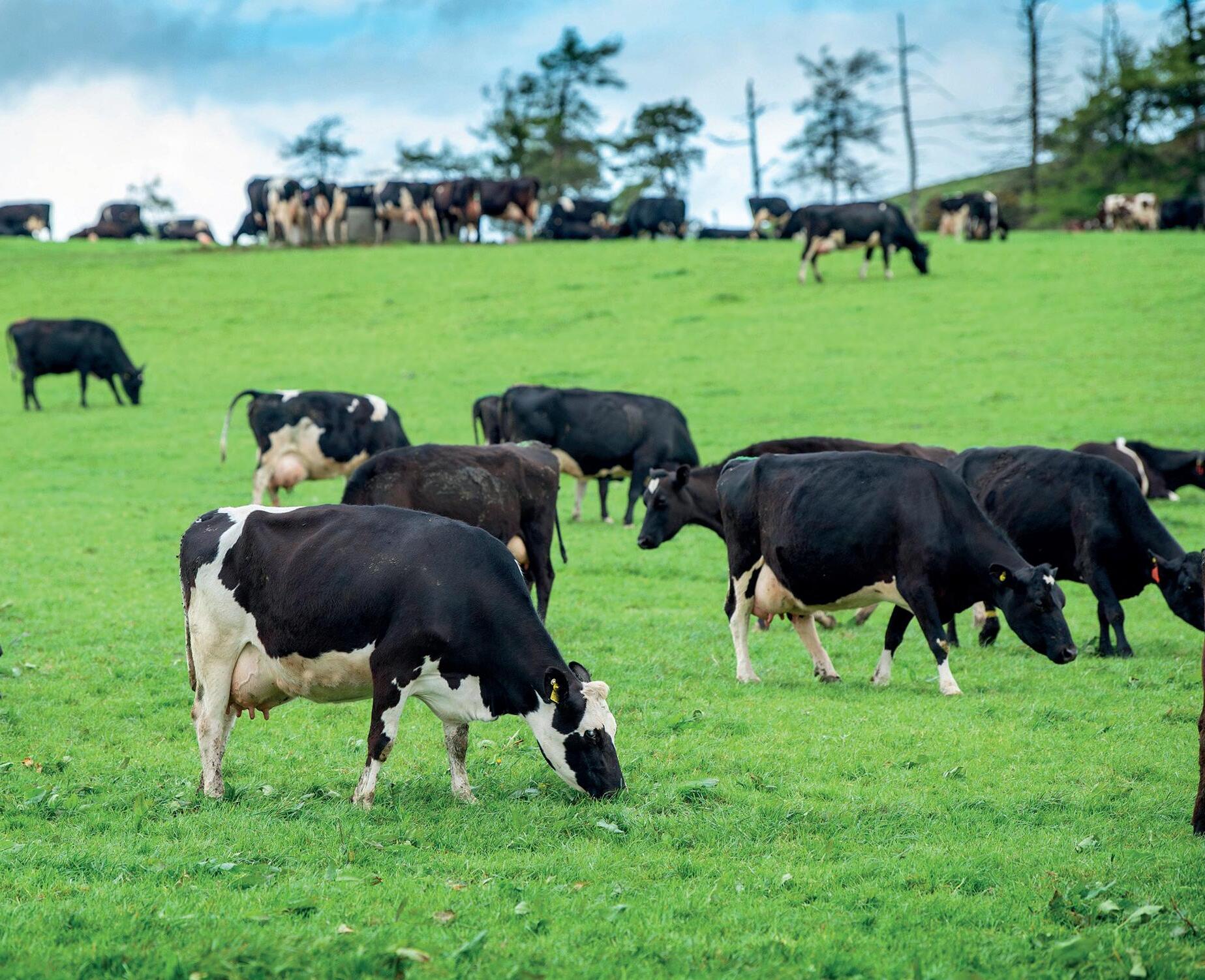
principles around regen – with deeper-rooted species, much more legumes, different grass species going much deeper, seeking out moisture –that builds resilience in our grass.

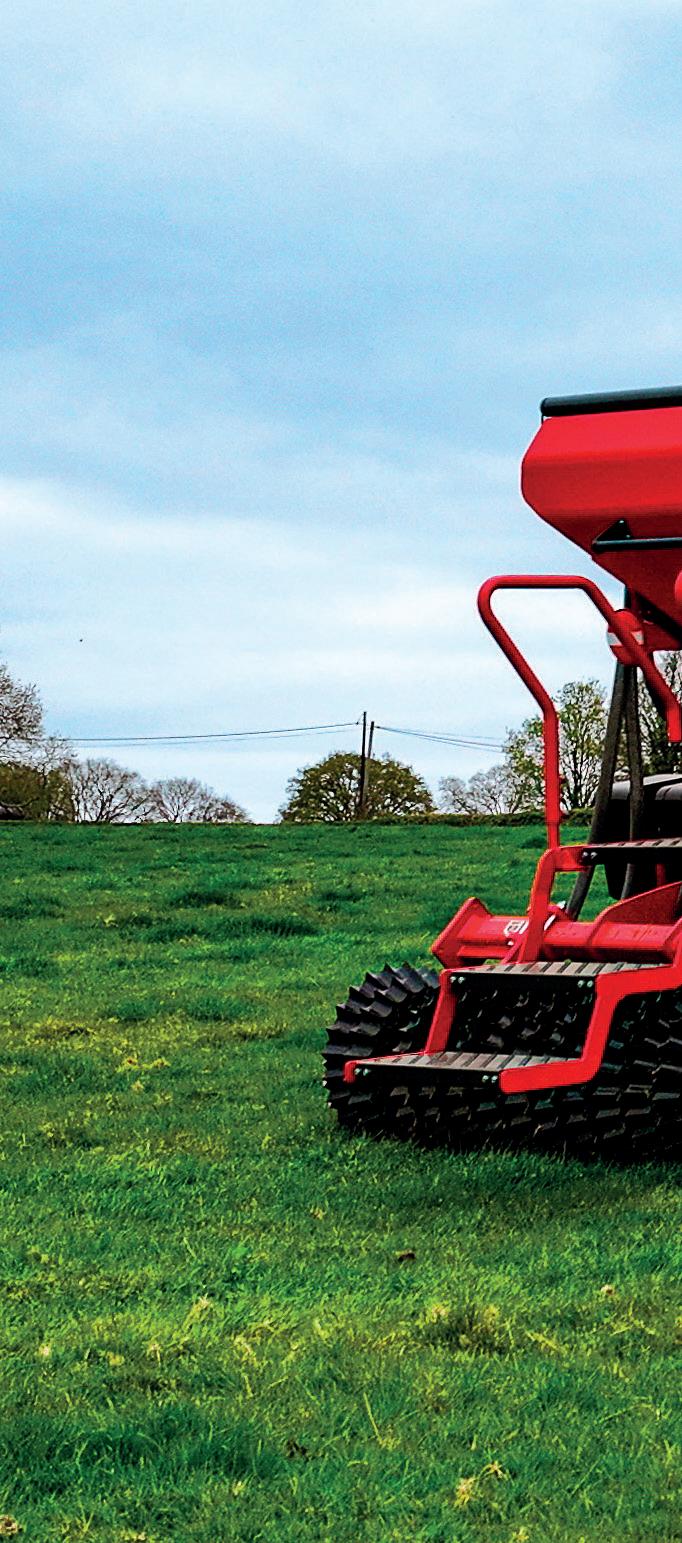
“My whole business revolves around grass. So the better I can do that, the more efficiently I can do that, the more resilient my farming is and the more confident I am about
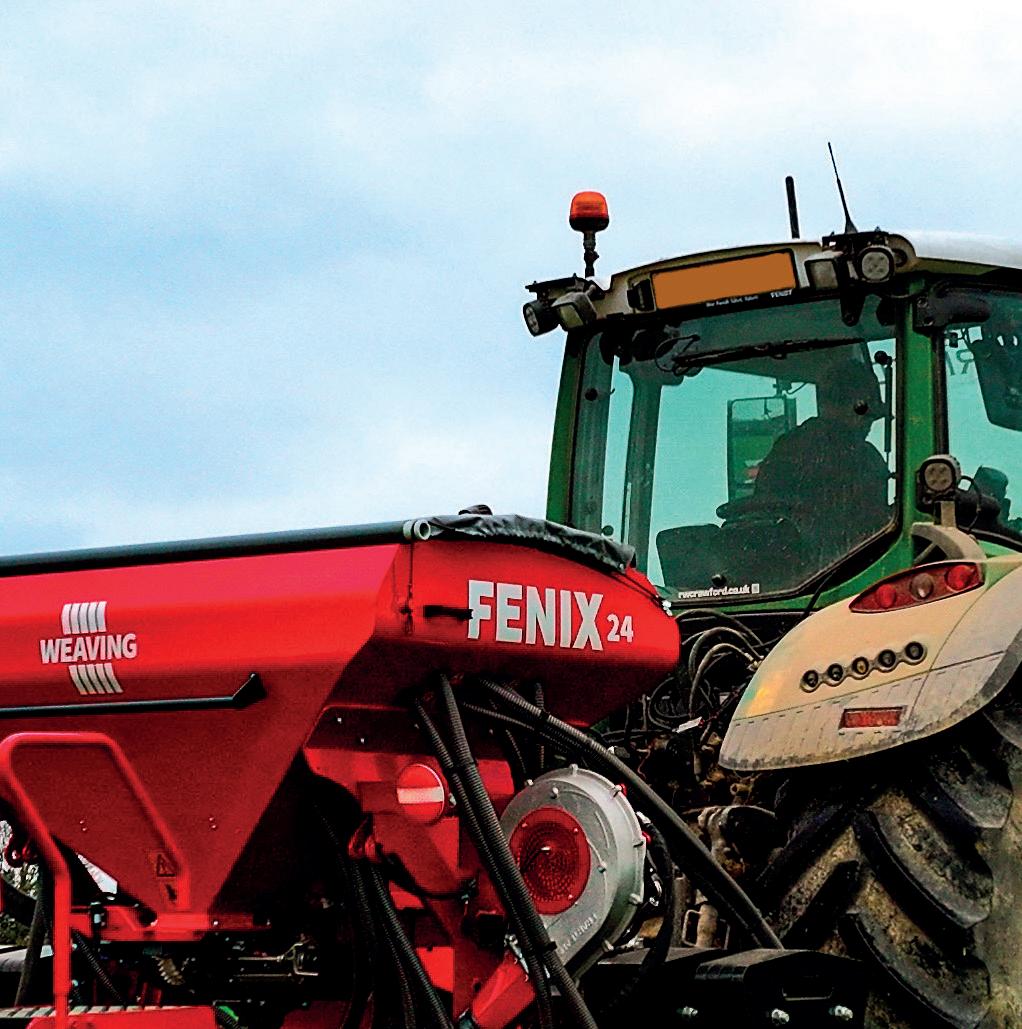

the future as well. And that is not just the financial side of it but agriculturally too – the confidence that there will be a farm for the future,” he adds.








The Milk Plan rewards First Milk members that take additional steps to lessen their environmental impact.
Regenerative Farming
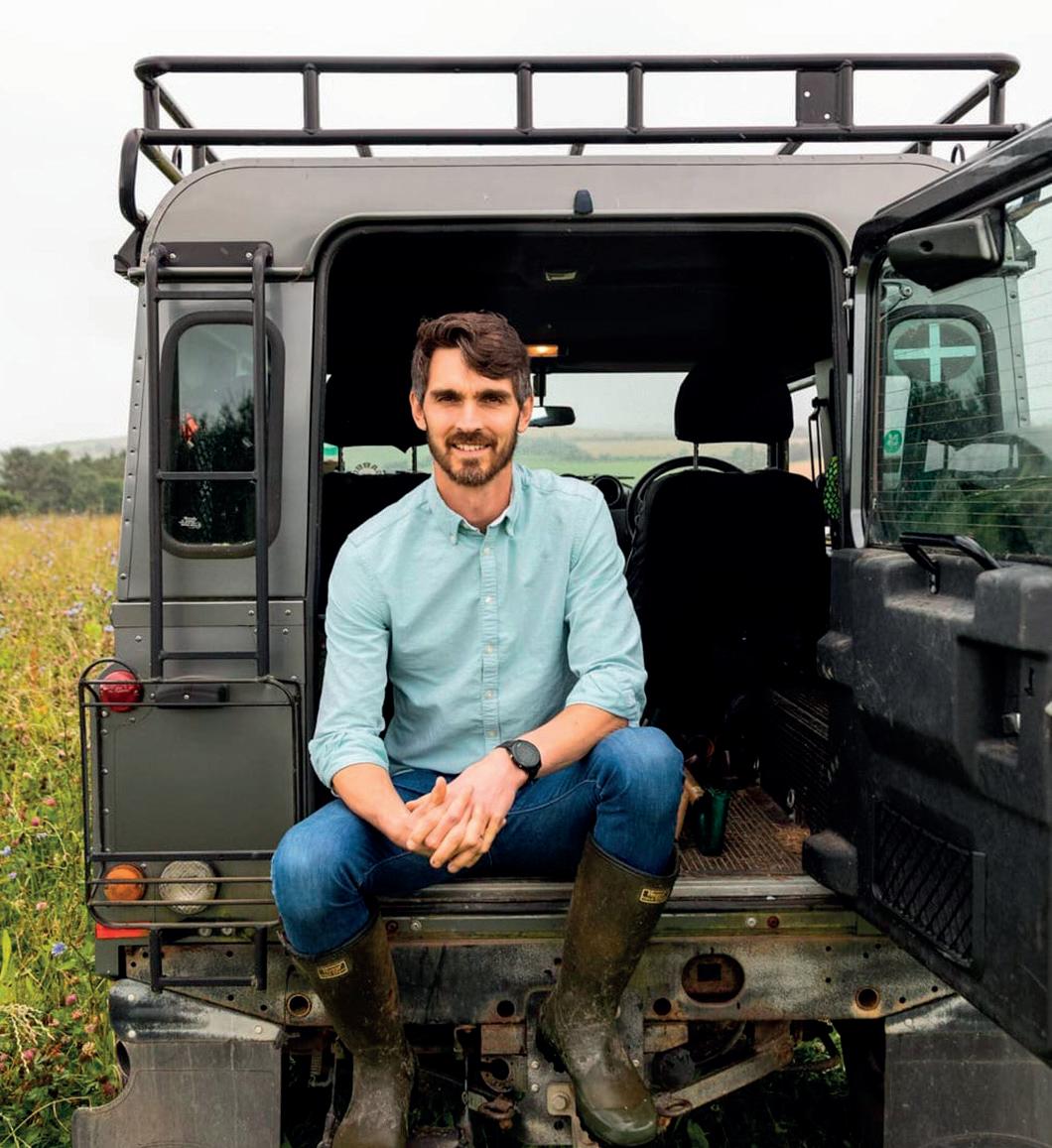




Milk launch ‘is
The Clarke family, who founded Trewithen Dairy and have owned Greymere Farm in the Glynn Valley, Cornwall, since 1976, recognise the importance of regenerative farming – not only for the farmer supplies, but for the people buying their milk.
That is why the Cornish dairy has launched Regen Milk, which is milk sourced from farms which use regenerative agriculture practices.
Francis Clarke, chief procurement officer at Trewithen Dairy, says the name ‘Regen Milk’ was settled on because the business wanted to be ‘open and clear about what it stands for’.
With nature
He says: “It is milk from farms that are working with nature, not against it.
“Regenerative farming is about improving the land, not just sustaining it. That means better soil health, more wildlife, healthier cows and a way of farming that restores the natural balance.”
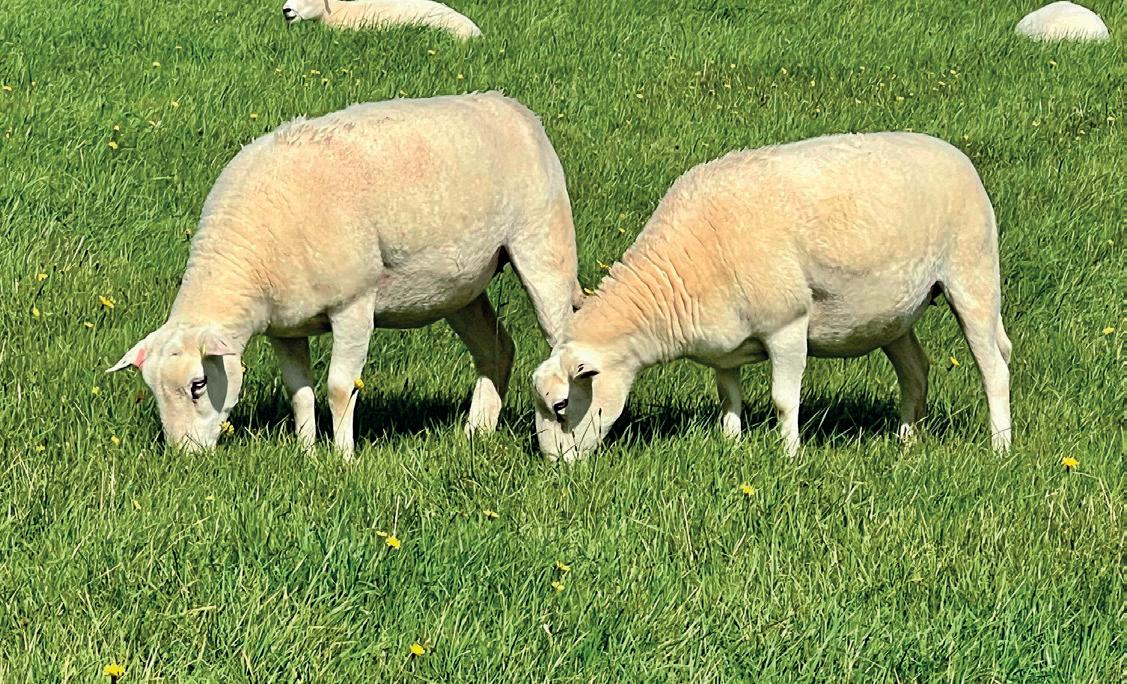
However, Mr Clarke says Regen Milk is a term that many may be unfamiliar with. He adds their own research shows that those who understand the term are 80% more likely to buy the product, but new
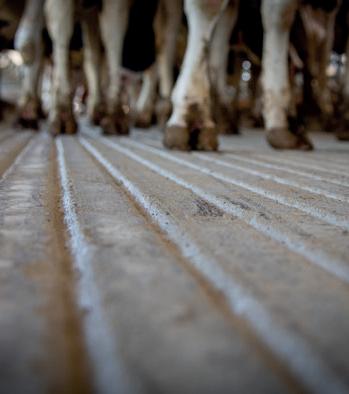
opportunities will help more people to connect with the concept.
“That is why we are currently looking at the name and exploring options that better highlight the benefits of regenerative farming and make it easier for consumers to understand at a glance,” he says.
“The core of the product – greattasting, high-welfare Cornish milk from nature-friendly farms – remains exactly the same. It is just about making sure the name does justice to what is inside the bottle.”
Mr Clarke adds for them ‘regen’ focuses on five key principles: keeping living roots in the soil, minimising
It is more than just a product launch –it is a sign that regenerative dairy can take its place in the mainstream
FRANCIS CLARKE


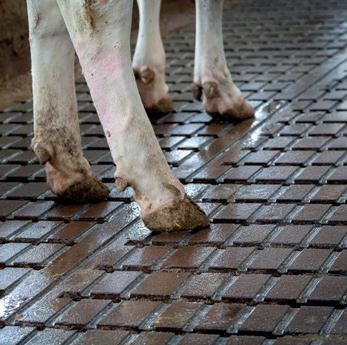
Francis Clarke, of Trewithen Dairy.
disturbance, integrating livestock, covering the ground and encouraging natural diversity.
“We work with Farm Carbon Toolkit to analyse data and guide decisions,” he says.
“Independent soil testing is carried out as part of this, giving us a true picture of what is happening underground from the surface right down to the deeper layers.
“This insight helps us work alongside our farmers to apply the results in the real world, and we run regular meetings to share learnings and support one another along the way.”
Nationwide
The family-owned Cornish dairy has made great strides getting its Regen Milk sold in more than 600 Tesco stores across the country.
Mr Clarke says: “We are incredibly proud. It is more than just a product launch – it is a sign that regenerative dairy can take its place in the mainstream.
“For many people, this will be their first encounter with regenerative farming. Being on supermarket shelves gives us a platform to help consumers understand that their choices really do matter.
“It gives us the chance to show
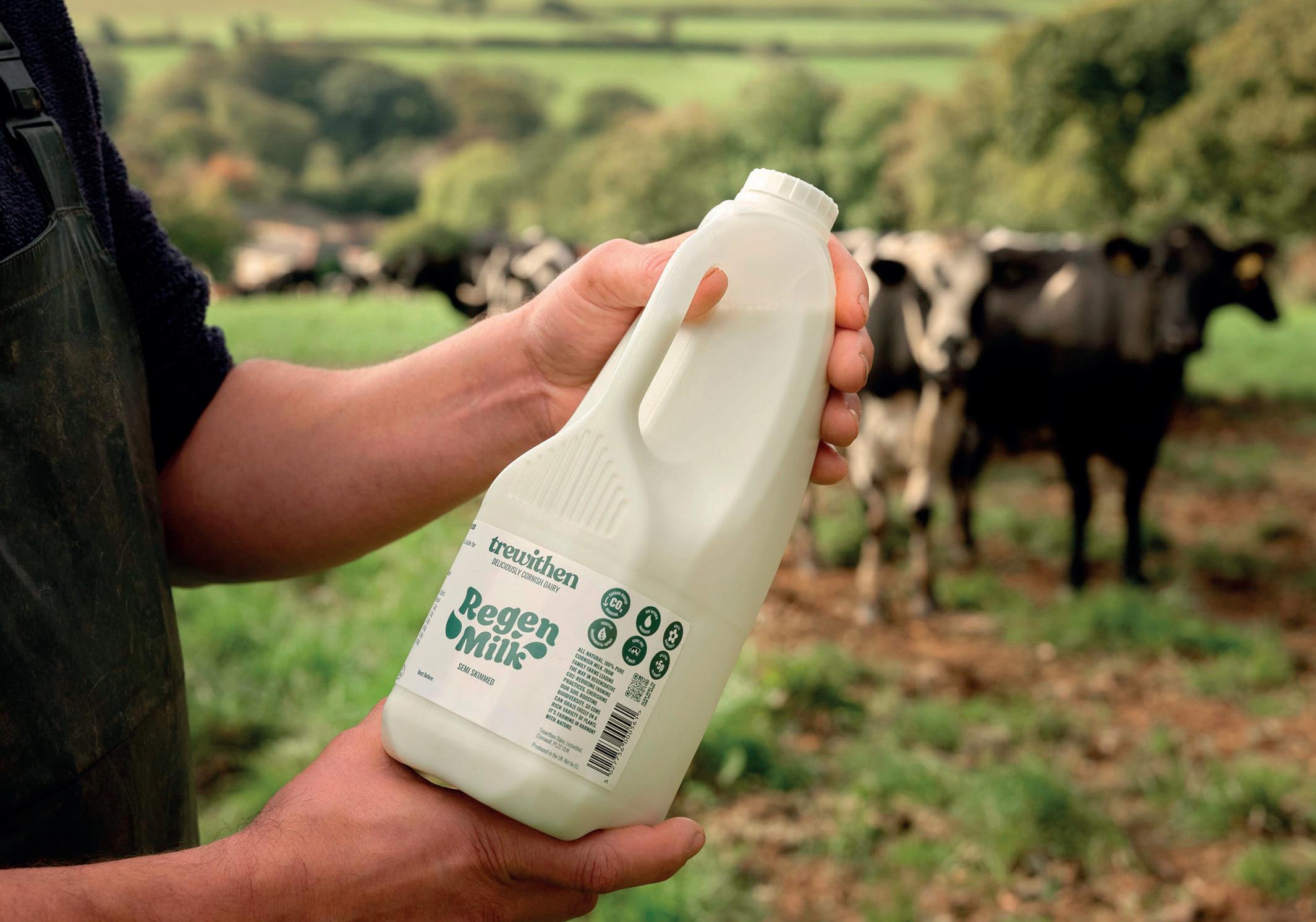
that dairy can be produced in a way that puts the health of the land and the welfare of animals front and centre.”
And Mr Clarke says because regenerative farming is a timely process that requires lots of commitment and often a different way of thinking, Trewithen Dairy pays the farmers that produce its Regen Milk an extra 5p
per litre. There are currently six farms producing milk for the Regen Milk product.
Mr Clarke adds: “This extra 5ppl gives our farmers the ability to keep learning, trial new approaches and invest in better tools and measurements to improve what they do.
“It is also about recognising value. If we want more farmers to
Mr Clarke says the basic product is the same great-tasting, highwelfare Cornish milk.

move towards regenerative methods, we need to make sure it is financially sustainable for them too, not just for the land.
“At the end of the day, our aim is simple – to produce brilliant Cornish dairy in a way that looks after nature, the cows and the farmers. Regen Milk is just the beginning,” he says.
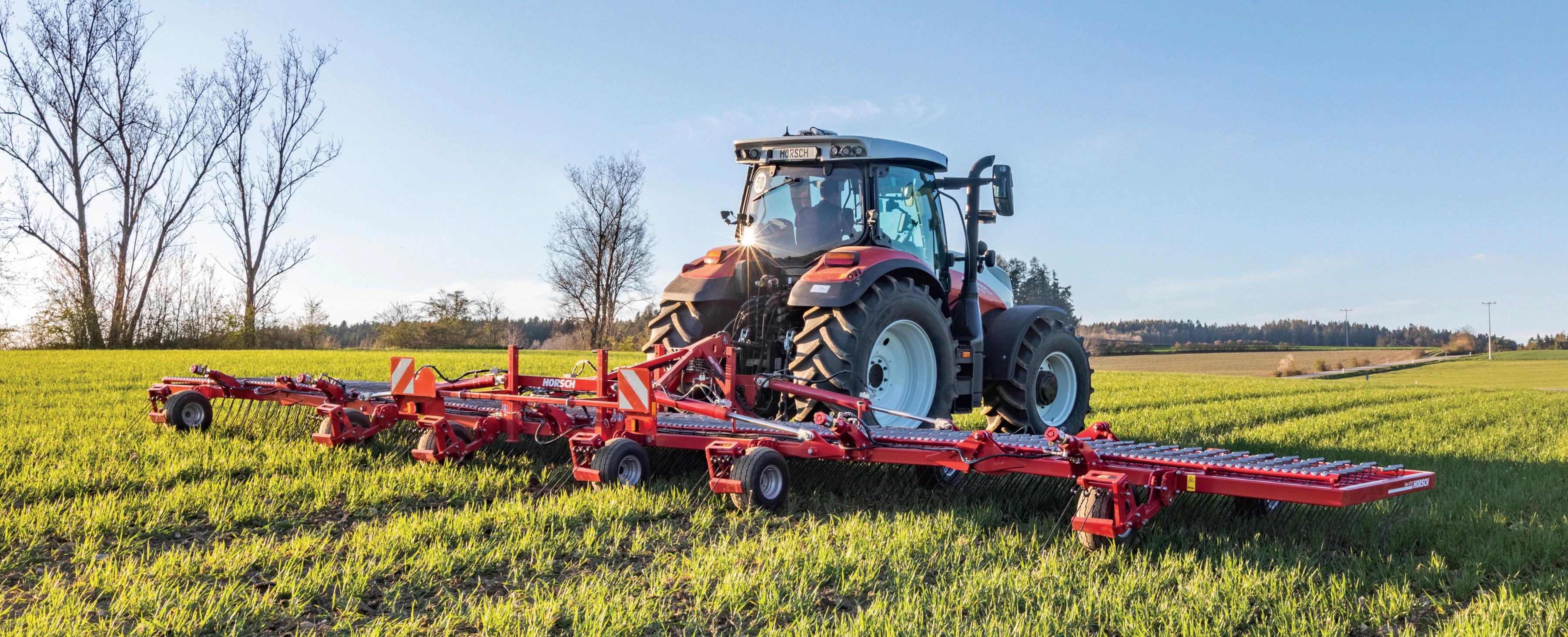




REGENERATIVE - HYBRID FARMING SYSTEM
The HORSCH Hybrid Farming System combines the best practices of organic and conventional farming for a solution to weed control without glyphosate. The Cura ST harrow is ideal for all types of soil and conditions. 500g to 5kg pressure on every tine lets the machine work conservatively or very aggressively. To discover more about the wide and versatile range of cultivators, drills and sprayers, speak to your local HORSCH dealer HORSCH.COM


Regenerative Farming
Regenerative approach key to sustainable future on-farm
For the past 18 years, Andy Gray has managed the 60-hectare (148-acre) Elston Farm, located near Crediton, Devon, where initially regenerative farming techniques were limited to minimum tillage cereals.
But in the last five years this has developed to include integrating livestock and a mix of herbal leys, wildflower margins and silvopasture, which are all playing a critical role in carbon sequestration, soil structure improvement and livestock nutrition.
The enterprise also comprises 40 red deer and a small herd of Jersey dry cows which are fattened for beef, and farmed in tandem with a butch-


ery business, supplying regional meats to local hotels, restaurants, universities and other butchers.
As an early adopter of regenerative agriculture, Mr Gray took part in Lloyds Banking Group’s baselining audit of environmental practices in conjunction with Soil Association Exchange.
He has used the recommendations to further advance his regenerative approach.
He says: “The Soil Association Exchange baselining audit was really helpful, it pointed me towards environmental schemes I had not come across before.
“It opened my eyes to wider possibilities and got me thinking about some really practical ways I could
make the most of the Sustainable Farming Incentive – including a few actions I would not have thought of myself.”
Soil health has been at the heart of Mr Gray’s farming approach ever since he moved away from an intensive arable system nearly two decades ago.
Central
“Soil is central to everything we do here,” he says.
“I have been fascinated by it long before it became fashionable.”
That long-term commitment is now paying off, laying the foundations for more regenerative practices. Despite working with sandy soils that naturally store less carbon, Mr Gray has introduced more than 24ha (59 acres) of herbal leys and a blend of 10ha (25 acres) of silvopasture combined with wildflower mixes to improve both soil health and biodiversity.
I am impressed by how the land has responded to the trees and change of practice. Everything is functioning better ANDY GRAY
“It takes time to build soil carbon,” he adds.
“Anyone who says otherwise is talking complete rubbish.”
Elston Farm is part of the Devon




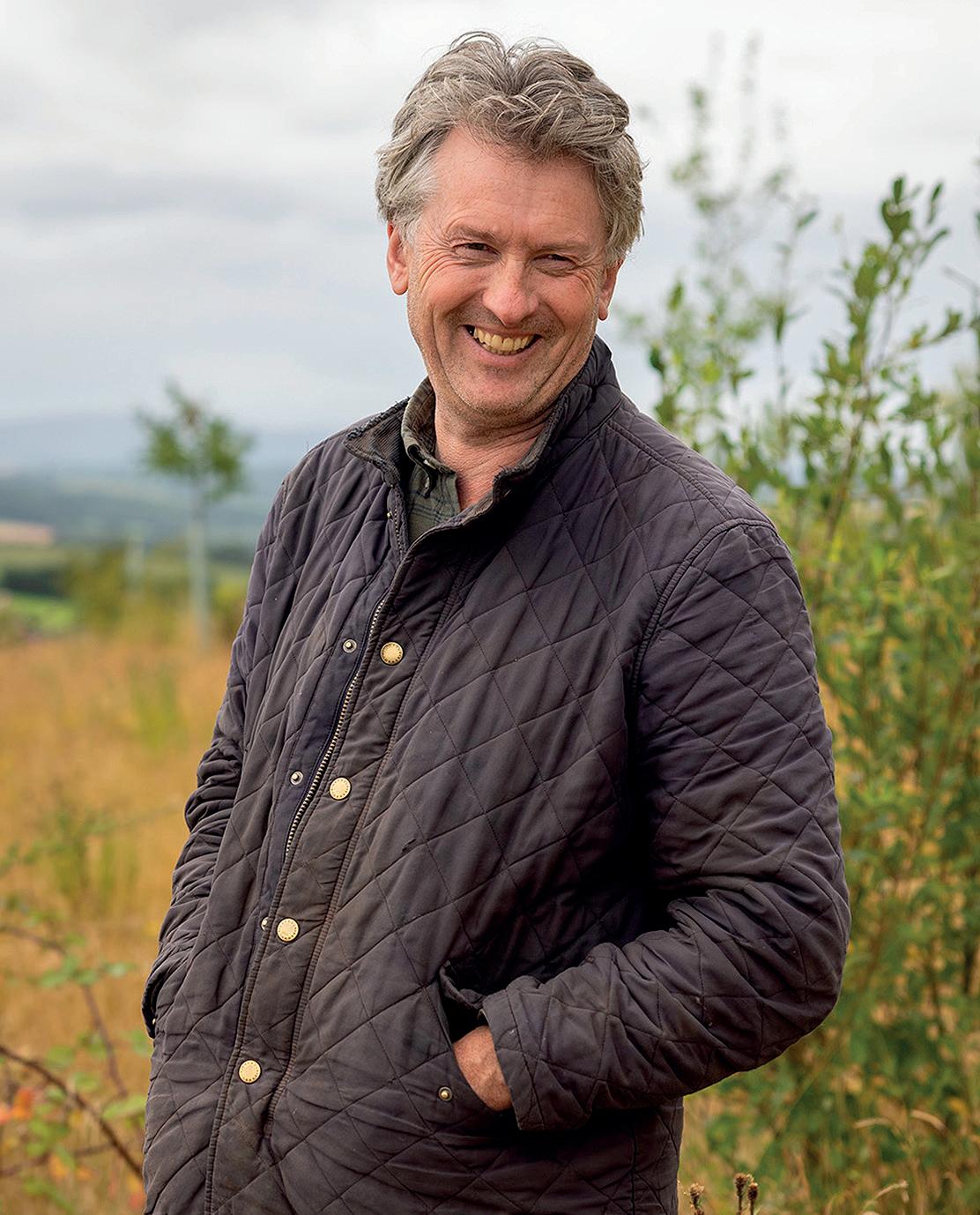



Silvopasture Network, trialling tree planting alongside grazing. About 10ha (25 acres) have been planted with native tree species, ultimately offering livestock shelter while boosting both soil fertility and soil carbon.
The results speak for themselves. In just four years, soil carbon levels have increased from between 1.2% and 1.9%, up to 2.4% – equivalent to sequestering around 70 tonnes of carbon/ha (28t carbon/acre).
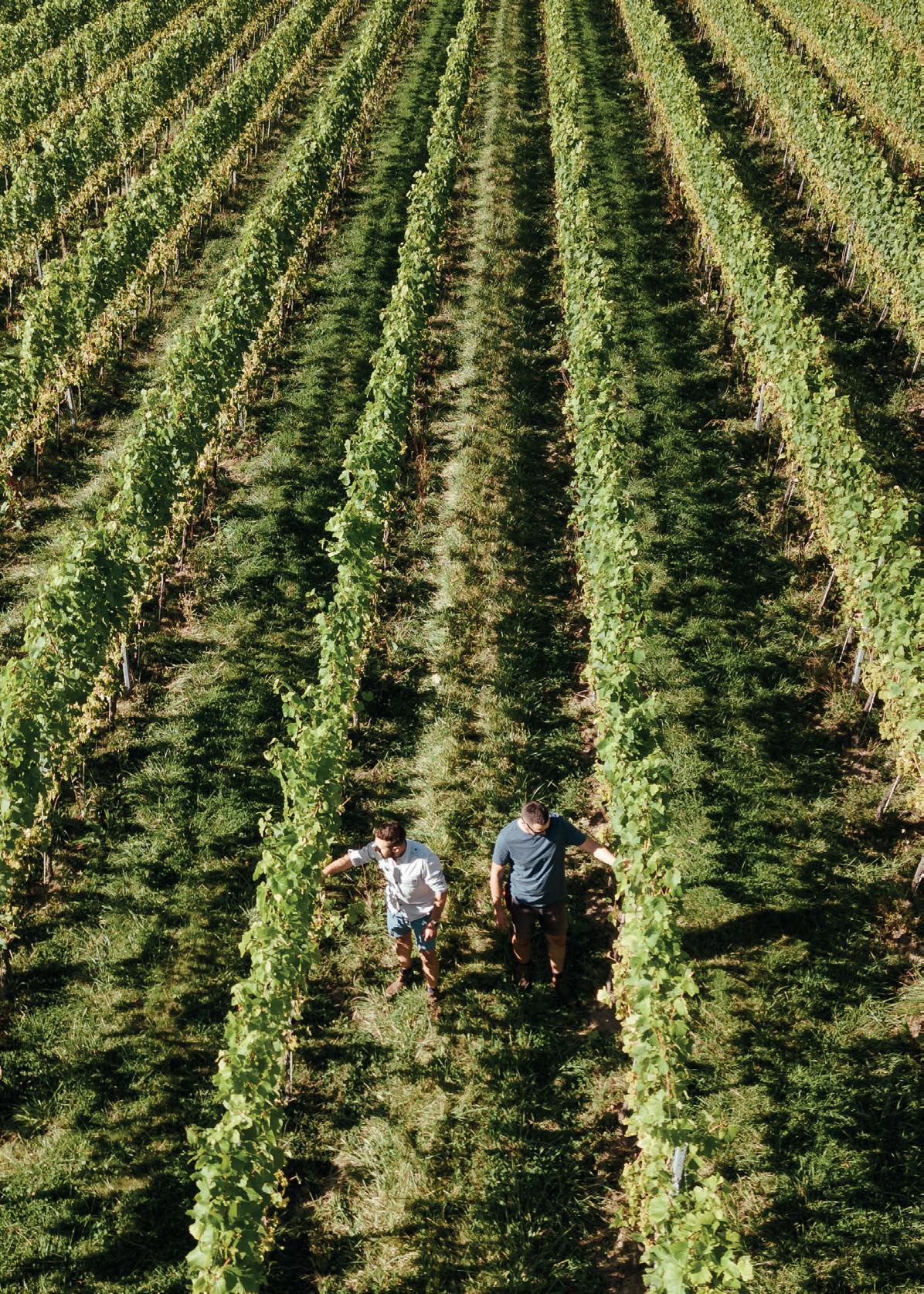
The farm’s mixed enterprise includes a small herd of Jersey dry cows.

Mr Gray says: “Even in the early part of this trial I am impressed by how the land has responded to the trees and change of practice. Everything is functioning better, the porosity has dramatically improved, and I am regarding the future use with a different perspective.”
Mr Gray’s biodiversity efforts are also to be commended, with 7.4 miles of hedgerows, along with wildflower margins across the farm

Regenerative Farming
FUTURE-PROOFING WITH ENVIRONMENTAL BASELINING
THE Soil Association Exchange baselining audit, funded by Lloyds Banking Group, provided a comprehensive assessment of the farm’s environmental performance and identified various agri-environmental schemes under the Sustainable Farming Incentive (SFI) which offered new opportunities.
These opportunities, combined with funding from Exchange Market, will further enhance the farm’s sustainability credentials.
Launched in 2025, the Exchange Market offers sustained payments to farmers adopting regenerative practices
jointly delivering a rich and varied ecosystem.
A recent Soil Association Exchange audit recorded 18 bird species on the farm, including red-listed skylarks and house sparrows.
and reducing emissions. Developed by Soil Association Exchange and funded by Lloyds Banking Group, this private finance model complements public schemes, helping farmers through the transition with greater financial certainty.
Supply chain
Lee Reeves, UK head of agriculture at Lloyds Banking Group, says: “Sustainable farming is not just about reducing environmental impact – it is about securing the future of the entire UK farming and food supply chain.”
With a Soil Association Exchange
assessment, farmers can easily see whether they are in the top 10% for their enterprise, somewhere in the middle, or if there is room for improvement. It provides real-time insights –and as more data is added, the benchmark shifts, giving farmers the most up-to-date picture of how they are doing.
Mr Reeves adds: “Farmers need consistent support, reliable data and financial incentives to make this transition successful. We know they cannot do this alone – both private and public funding have to play a role in driving this change.”
Our soils used to run off every time it rained. Now, the water sinks into the soil, and the land stays green, even during dry spells
ANDY GRAY
increased overall productivity, while also benefiting the surrounding environment.
Diversification

“Our soils used to run off every time it rained,” says Mr Gray.
“Now, the water sinks into the soil, and the land stays green, even during dry spells.”
This improvement in water retention has enhanced the farm’s resilience to extreme weather and
For the past 18 years minimum tillage has been adopted at Elston Farm to preserve soil structure and improve water retention – this practice, combined with winter cover crops and the planting of grassy or tree-lined areas along rivers and streams has helped mitigate flooding and reduce water run-off during heavy rainfall.
Beyond regenerative farming, Mr Gray has also diversified his business to offer stronger financial sustainability.
Alongside processing and selling the meat produced from the farm direct, Mr Gray has launched a dog
food line, using less popular cuts of meat which would otherwise go to waste.
Mr Gray adds: “We started the dog food business to make sure we were not wasting anything. It helps us use the whole animal and make the most of what we produce.”
This profitable venture adds value to the farm’s produce, and serves the local community while contributing to sustainability goals by reducing food waste.
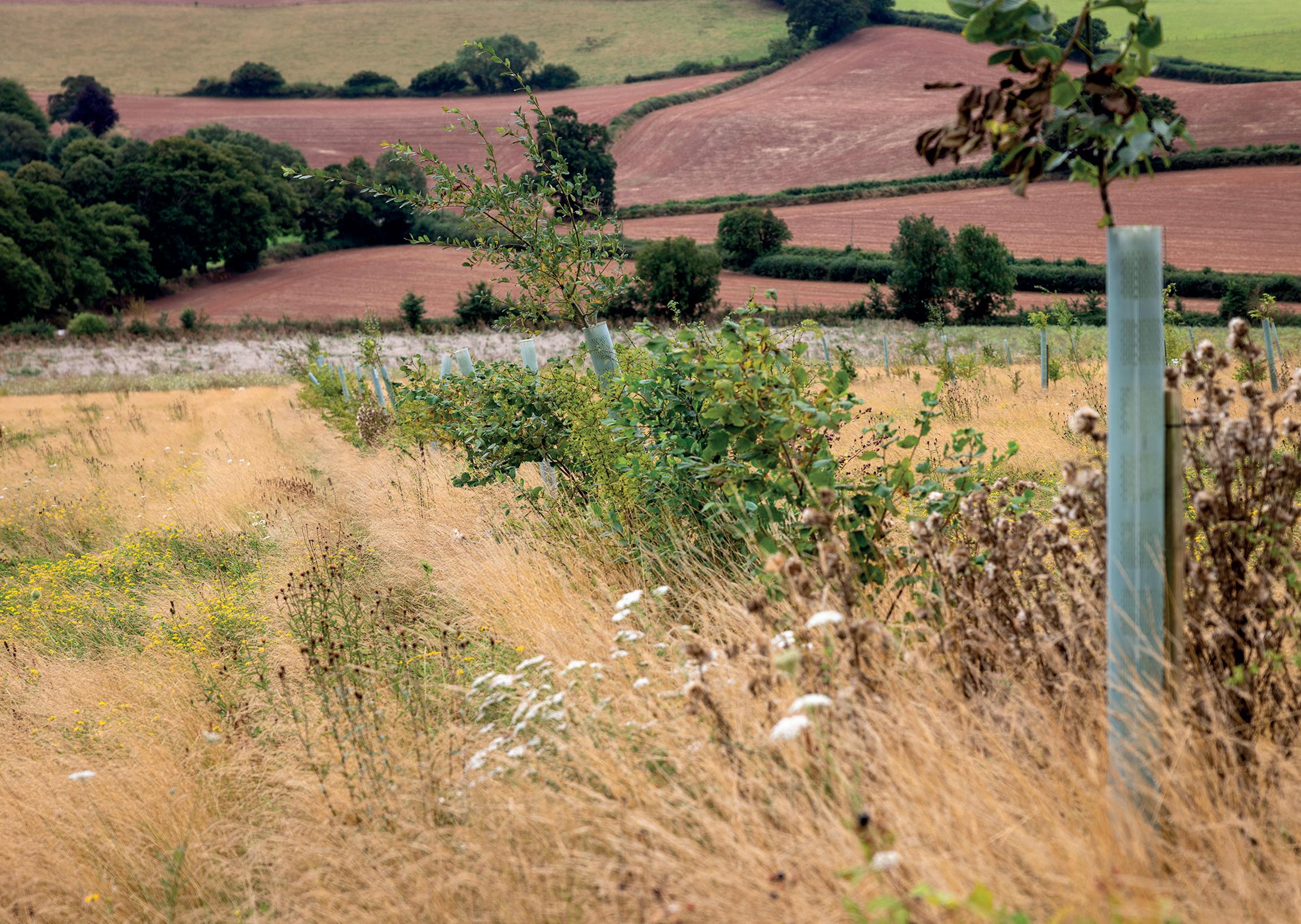
Andy Gray has introduced herbal leys, new trees and 7.4 miles of hedgerows to Elston Farm.




New Category for 2025




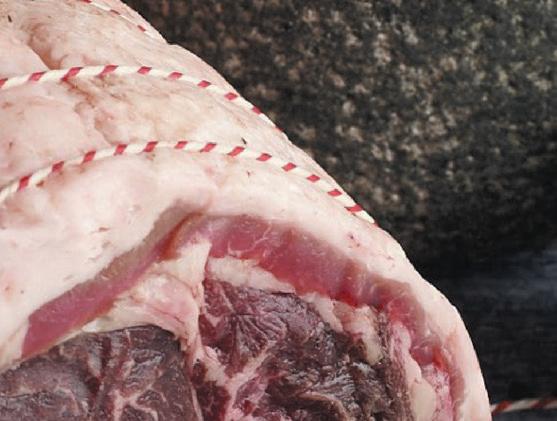




British Farming Awards Introduces Regenerative Farmer of the Year
Regenerative
Farmer of the Year, created and proudly sponsored by The Ethical Butcher, the UK’s leading regenerative meat supplier.

This award was created in collaboration with Farshad Kazemian, founder and CEO of The Ethical Butcher, to recognise the growing importance of regenerative agriculture, a movement prioritising soil health, biodiversity, carbon sequestration, and sustainable food production.
As farming faces increasing pressures, this award highlights those farmers leading the way in building resilient, nature-friendly systems.
Backed by Farmers, Built for Regeneration
The Ethical Butcher is not only a disruptor in the supply chain - it is majority-owned and supplied by regenerative farmers. Among its stakeholders are John Cherry, co-founder
of Groundswell, and Dr Johnny Wake of Courteenhall Farm, Sustainable Farmer of the Year at the 2024 British Farming Awards.
The business previously received a British Farming Award itself - a rare accolade for a non-farming company – now focuses on creating a platform for the very farmers it was built to serve.
Driving Change in Practice
In addition to initiating this new award, The Ethical Butcher continues to lead on practical change - from launching the UK’s first soy-free chicken, to offering premiums for regenerative beef producers.
These initiatives are already reshaping how supply chains reward sustainability.
An Award for a Movement on the Rise
The launch of the Regenerative Farmer of the Year category comes at a time of increasing public demand for climateconscious food. This award will formally recognise those who are restoring ecosystems, rebuilding soil health, reducing inputs, and helping redefine farming’s role in environmental recovery.
Farshad Kazemian CEO of the Ethical Butcher says, ‘‘Sponsoring the Regenerative Farmer of the Year award is a natural extension of our mission at The Ethical Butcher - to champion farming practices that restore ecosystems, nourish communities, and produce truly ethical food. We believe regenerative agriculture is not just the future of farming, it’s the future of food, and we’re proud to support and celebrate the pioneering farmers who are leading the way.’’
Enter or Nominate someone you know deserving of this award, or any of the other British Farming Award Categories.
Scan the QR code to find out more
